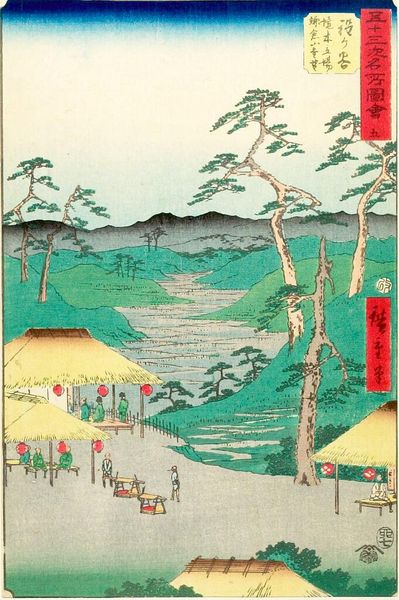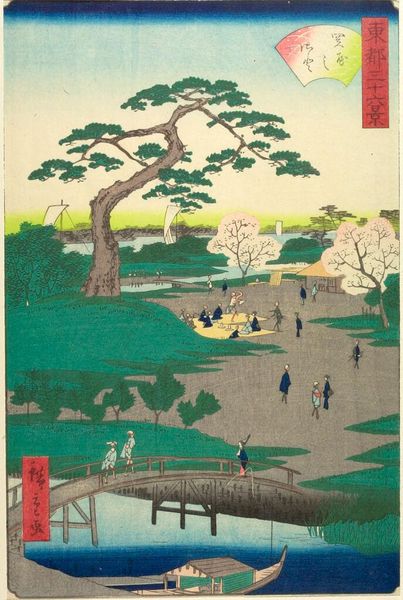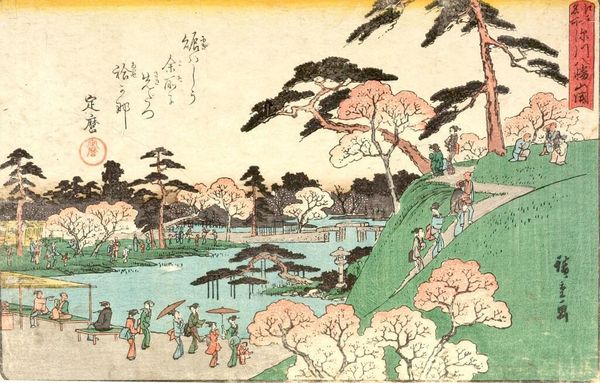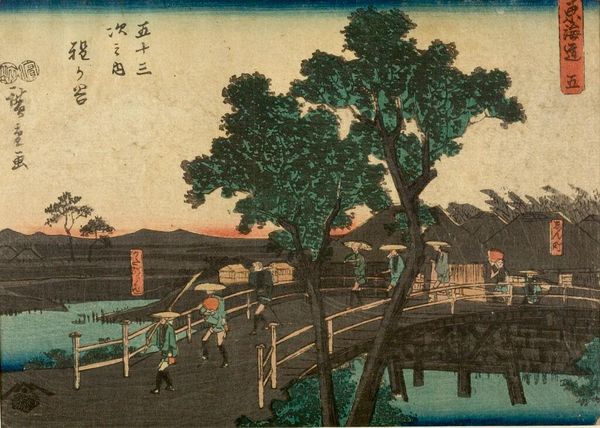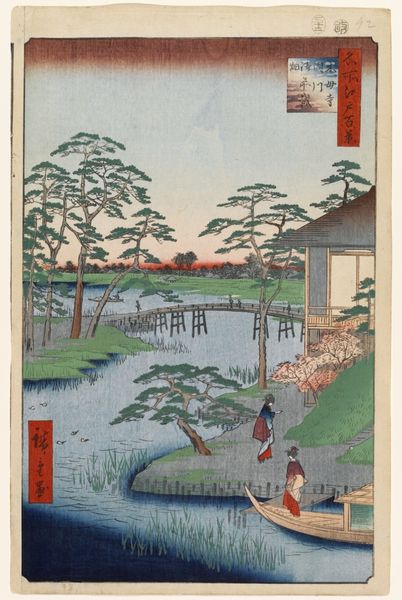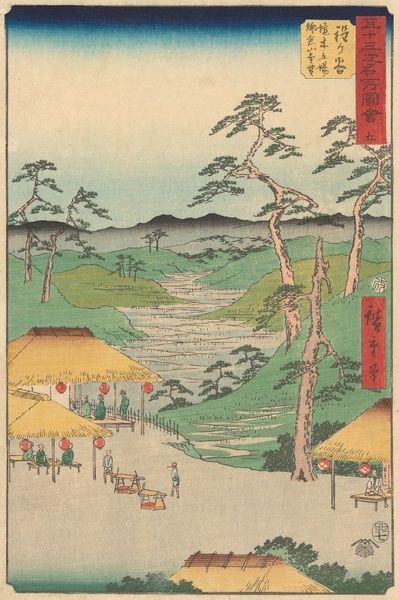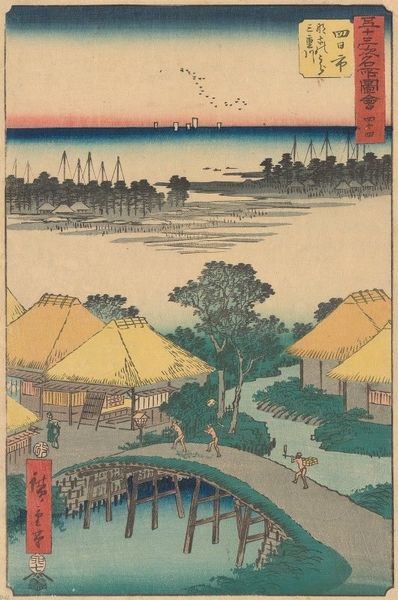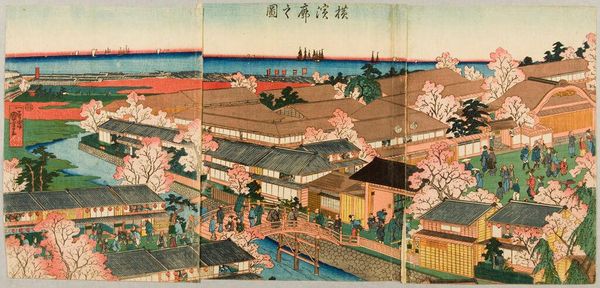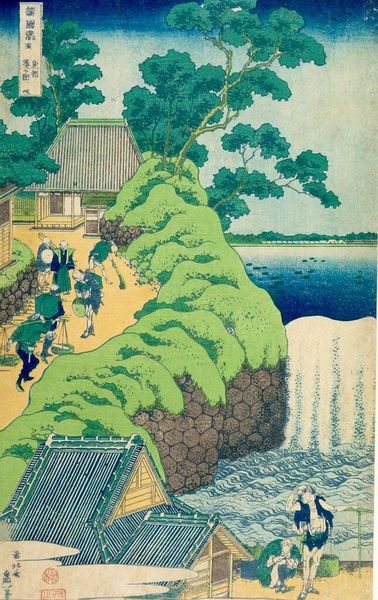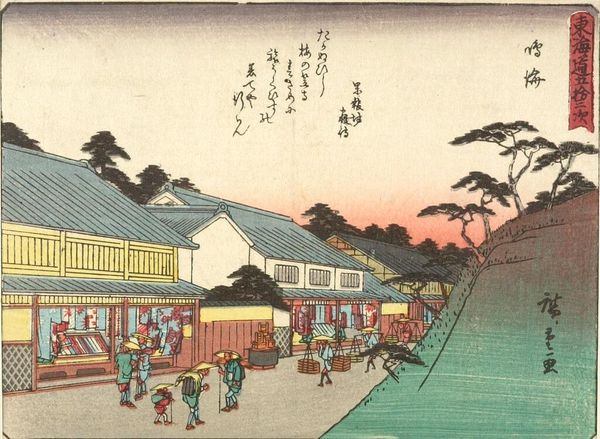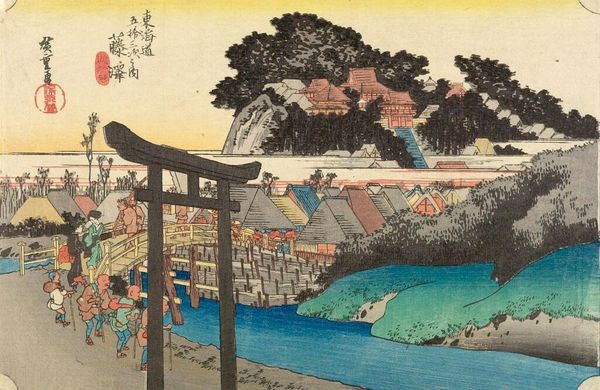
Mokuboji Temple, Uchigawa Inlet, Gozensaihata (Mokuboji Uchigawa Gozensaihata), Number 92 from the series One Hundred Famous Views of Edo (Meisho Edo hyakkei) Possibly 1857
0:00
0:00
Dimensions: Paper: H. 35.3 cm x W. 24.2 cm (13 7/8 x 9 1/2 in.)
Copyright: CC0 1.0
Curator: This is Utagawa Hiroshige's "Mokuboji Temple, Uchigawa Inlet, Gozensaihata" from his series, "One Hundred Famous Views of Edo." Editor: It feels like a dream, doesn't it? The water shimmering, the bridge fading into the distance… a tranquil escape. Curator: Woodblock prints like this democratized art. Hiroshige captured Edo's popular spots, transforming everyday life into affordable art for the masses. Editor: Water is a recurring symbol, and the figures by the water might represent cleansing, transition, or perhaps simply the flow of life itself. Curator: The location itself held significance; the Mokuboji Temple was dedicated to Kobo Daishi, a revered Buddhist monk who impacted Japanese arts and learning. Editor: The pine trees, often symbols of longevity, frame the scene, giving the impression that this tranquil scenery is timeless, a constant source of reflection. Curator: And Hiroshige was commissioned by a publisher to make these, showing us the art market and the economic structures supporting art production. Editor: Looking closely, the layering of water, land, and sky reminds me of the interconnectedness of nature. I think there's a deeper invitation to contemplation here.
Comments
No comments
Be the first to comment and join the conversation on the ultimate creative platform.
